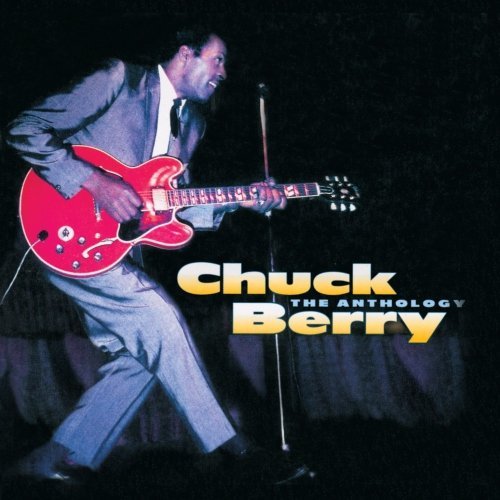By: Rob James
 It’s hard to pick out the best decades for the ‘guitar gods’. Some might say that the best era for sheer virtuoso playing and soloing was during the 1970s and the 1980s, before excess for excess’s sake became a bit out dated.
It’s hard to pick out the best decades for the ‘guitar gods’. Some might say that the best era for sheer virtuoso playing and soloing was during the 1970s and the 1980s, before excess for excess’s sake became a bit out dated.
What is important to understand, though, is how much guitar playing has gradually changed and developed new levels of individual improvisation, while still building on the core features of blues and early forms of rock.
I would,therefore, like this article to act as a brief survey of the different decades of the ‘guitar gods,’ and how different figures have set up and influenced today’s players.
Ultimately, it’s near-on impossible to cover all of the best players, their styles, and the different types of guitar music that have been represented. I’ll mainly focus on rock and pop, and the increasing focus on the guitar player as an icon from the 1960s to the 1980s, and beyond.
1950s and 1960s
The origins of modern guitar playing, and the importance of the guitar virtuoso, might be traced back to early 20th century roots music, the blues, and the increasing visibility of electric guitar players and rock and roll in the 1950s.
Early pioneers like T-Bone Walker and Robert Johnson demonstrated what could be achieved with the instrument as a force of raw power and technical experimentation. This influence found a form in the rockabilly and gradual transition of traditional blues into commercial pop through the likes of Chuck Berry, Bo Diddley, and Dan Cedrone by the late 1950s. Berry’s Gibson solos, chords and infectious stage persona particularly helped inspire a generation of young guitarists in the United States and the United Kingdom.
The development of blues guitar into rock guitar, its use in pop, and the incorporation of everything from Indian sitar music to classical and folk anchored the great guitarists of the 1960s.
Keith Richards’ use of Fender, Les Paul and Telecaster guitars was important for creating The Rolling Stones’ distinct sound, while George Harrison’s use of overdrive and ongoing experimentation with melody and effects in The Beatles played a key role in changing guitar styles.
For me, however, it would be technical innovators like The Byrd’s Roger McGuinn, and his creation of distinctive tones through a Rickenbacker, that would take guitar playing to a more virtuoso level.
In a similar way, Eric Clapton’s Gibson fusion of country, blues and overdriven effects, coupled with riffs and wah wah pedals, joined to the experimentation of Jeff Beck, Peter Townshend and Peter Green to take blues in new directions.
Above all, however, it was Jimi Hendrix’s wah wah pedals, high bends, longer solos and effects manipulation that marked him out as one of the most significant ‘guitar god’s of all time.
1970s and 1980s
 Virtuoso playing and stylistic fusions became the hallmark of the 1970s and 1980s, still arguably the high point for the guitarist as the unrestrained force of nature on stage and in the studio.
Virtuoso playing and stylistic fusions became the hallmark of the 1970s and 1980s, still arguably the high point for the guitarist as the unrestrained force of nature on stage and in the studio.
Key figures like Jimmy Page and Tony Iommi brought recording studio techniques to the stage for heavier sounds, and ever more elaborate solos. Downtuning, distortion and treble boosting also became key techniques, while guitarists like Ritchie Blackmore of Deep Purple fused classical influences and blues for prog rock styles.
While the rise of punk acted as a three chord broadside to some of the excesses of the guitar soloist, the ’80s saw new heights of experimentation, effects and never ending solos.
Eddie Van Halen, Randy Rhoads, John Petrucci, Steve Vai, Yngwie Malmsteen and many others helped make hammering, hooks, floating vibrato, rhythmic groupings and ridiculous shredding speeds a key part of metal, rock and prog.
1990s and 2000s
Although the theatrics of the 1980s began to subside in the 1990s with the drop D tuning and blues and 1970s influenced sounds of grunge, guitar virtuosos still had their place through the technical brilliance of the Red Hot Chili Pepper’s John Frusciante. Adam Jones’ searing riffs in Tool, and the elaborate production techniques and mastery of Radiohead’s Jonny Greenwood.
Again, it is hard for me to pick out the many different guitarists and styles of the past few decades. Suffice to say, the 1970s and 1980s arguably remain the periods when being a ‘guitar god’ meant having free rein to stretch out technique and ignore restraint.
About Rob James – Rob’s hobbies include: rocking, playing and checking out the guitar videos at www.licklibrary.com
Rob (11 years ago)
I don’t think a limit on guitar virtuosity has been in place since the 80’s, as you seem to be saying. Rather, things were taken a bit too far. I mean, did Jimmy Page playing guitar with a violin bow really advance guitar technique in any way?
I’m not sure it did.
Electric guitar technique, and thinking, has moved on since the 1970’s and 80’s, though- it is still a developing instrument in many ways, and- as such- technique on the instrument is being constantly refined (as it is for many other instruments too).
So, I’m not sure people employ more restraint nowadays, but definitely all the crazy ideas of setting guitars on fire, using a bow, or playing with your teeth have gone out of fashion somewhat.
So yeah, I half agree :-)